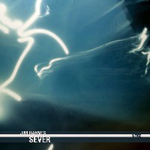|
|
 |
Dusted Reviews
Artist: Jim Haynes Album: Sever Label: Intransitive Review date: Jul. 28, 2009 |

|
|
|
 |
For well over a decade now, San Francisco resident Jim Haynes has quietly and persistently revealed to us a teeming underworld of sonic and visual activity. His advocacy of experimental music and sound art assumes myriad forms – his writing, his position as editorial director of the non-profit organization 23five and his role in The Helen Scarsdale Agency – but it’s all characterized by an obvious enthusiasm for the art form and dedication to the possibilities that present themselves when the highly abstract meets the very real and the very tactile. Basically, he’s the kid who lifts up a rock to show you all the bizarre life it’s hiding, all the time saying, “Look how cool this is.
The same sense of revelation, though slower and subtler, runs through his music. “I rust things,” he says, and this creeping combination of decay and transformation, the hallmark of his tattered dronescapes, is in fine form on the four pieces featured on Sever, his fourth widely available full-length recording. Seemingly not concerned with consonance or dissonance, or tonality or atonality, Haynes focuses (almost obsessively) on texture. He goes in for the tangible (scraped objects and field recordings), the invisible (shortwave radio static) and the sonically feral (feedback). The opening of “:” consists of a series of crisp, crackling bursts, while the first half of the 20-minute “::::” gets its gravity and motion from the grainy grind of what sounds like two large metal discs being rubbed together.
But if texture is Haynes’ obsession, then its intricate arrangement is his ballast, his way of grounding his abstract language so it remains accessible to a listener. Taking the drone as his musical template, he collapses the natural world, machine sounds, and human-made rustling in on each other. It’s the drone’s open-ended form, its conduciveness to mass layers and foregrounding of texture, that allows him the freedom to arrange such ostensibly incongruous sound events into gripping wholes. “::” is a case in point. A low rumble, that hovers between the border of heard and felt, stalks the piece, while all manner of events emerge and recede out of its swell, in and out of comprehension. Shortwave static? The rustle of twigs underfoot? The clanking of a buoy? The thrum of far-off traffic? Wind through a ventilation shaft? All these images arise, but never fully form.
Elsewhere, he goes in for total estrangement. “:::” features a nagging, autistic pulse and rhythmic whirring, but their origins remain obscure. Are they human, machine, electronic? Again, confusion and disorientation are the effects, and it becomes clear that Haynes is about illuminating the surreal and the strange in the physical world, intentionally keeping any direct reference to real-world locations and events out of reach. Transitions from piece to piece are jump-cuts, not seamless or marked by silence, a strategy that only heightens the creeping tension.
He might eliminate the idea of source from his environments, but not of the aura of place. The sources of sounds remain unknown yet not totally unfamiliar. Natural processes and phenomena come to mind (storms and ocean tides, in particular), as do the omnipresent hum and activity of the natural and built environment. But Haynes makes all of these phenomena sound as if they are one, smelting them into his fictitious field recordings and processing them with the dream logic of the sub-conscious, turning over yet another rock for us. Very cool, indeed.
By Matthew Wuethrich
|







